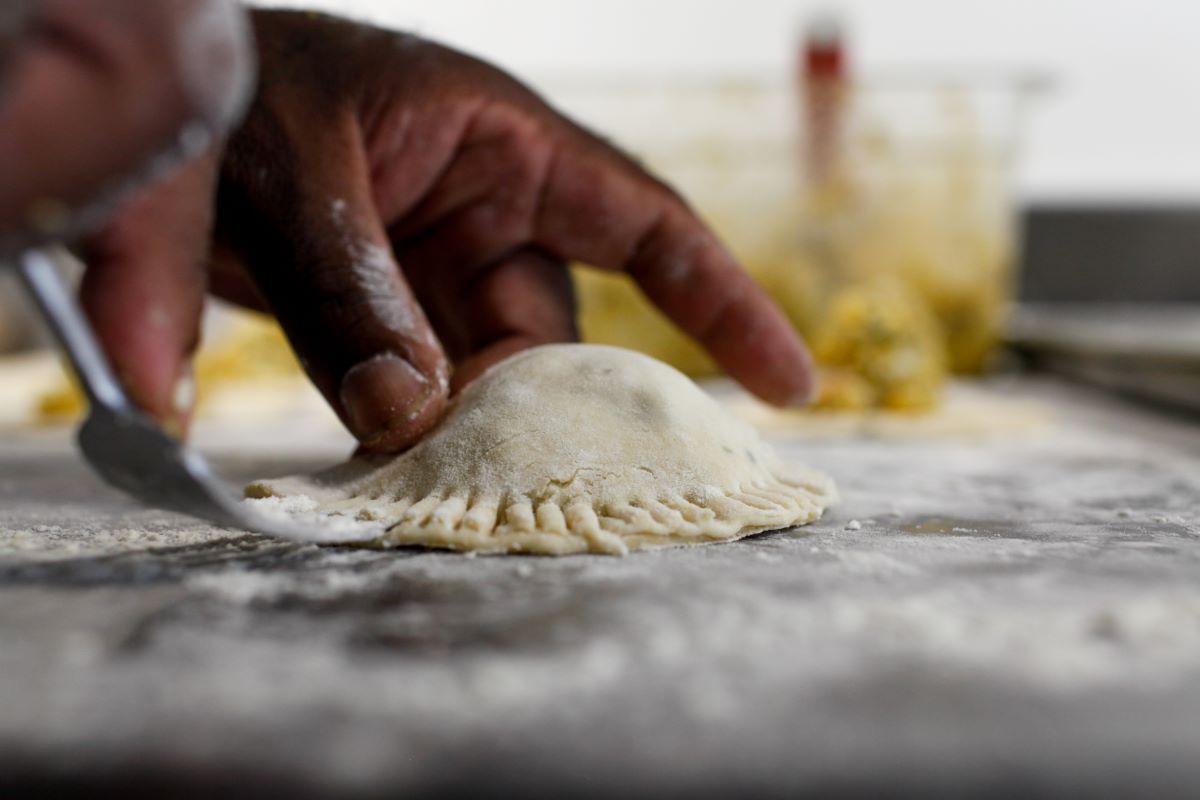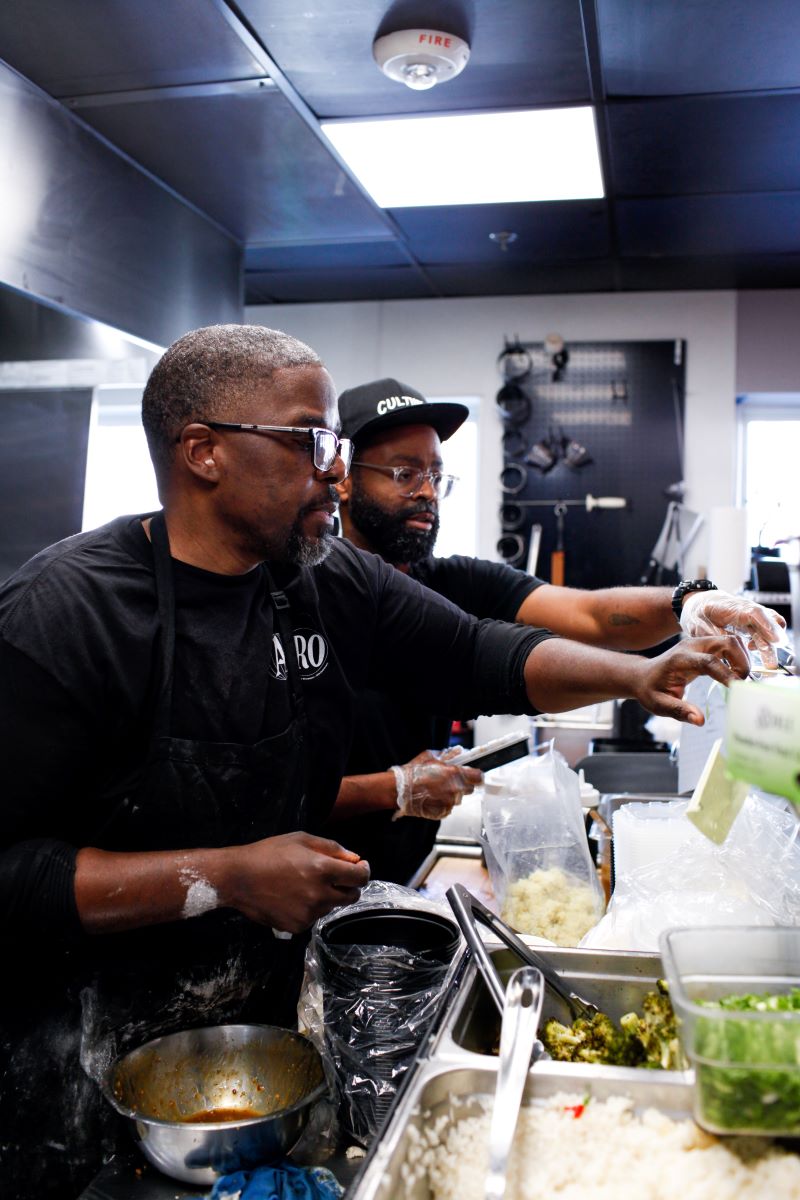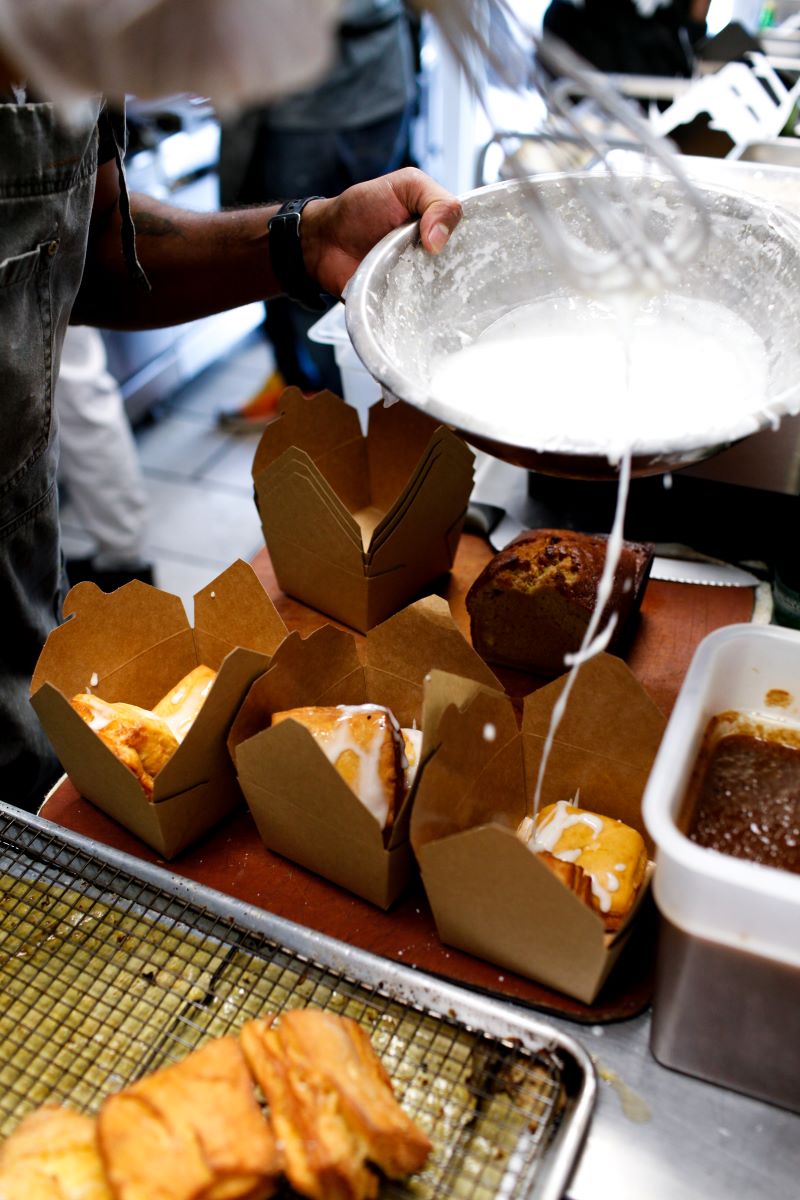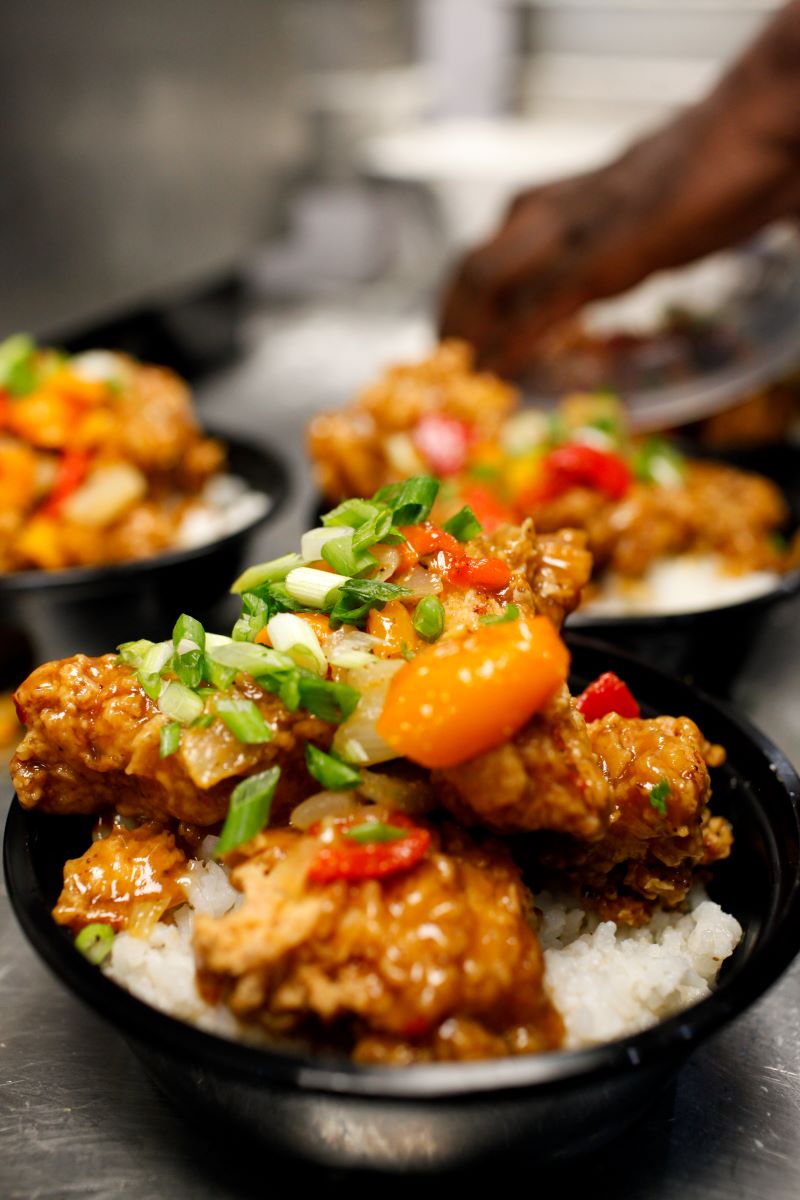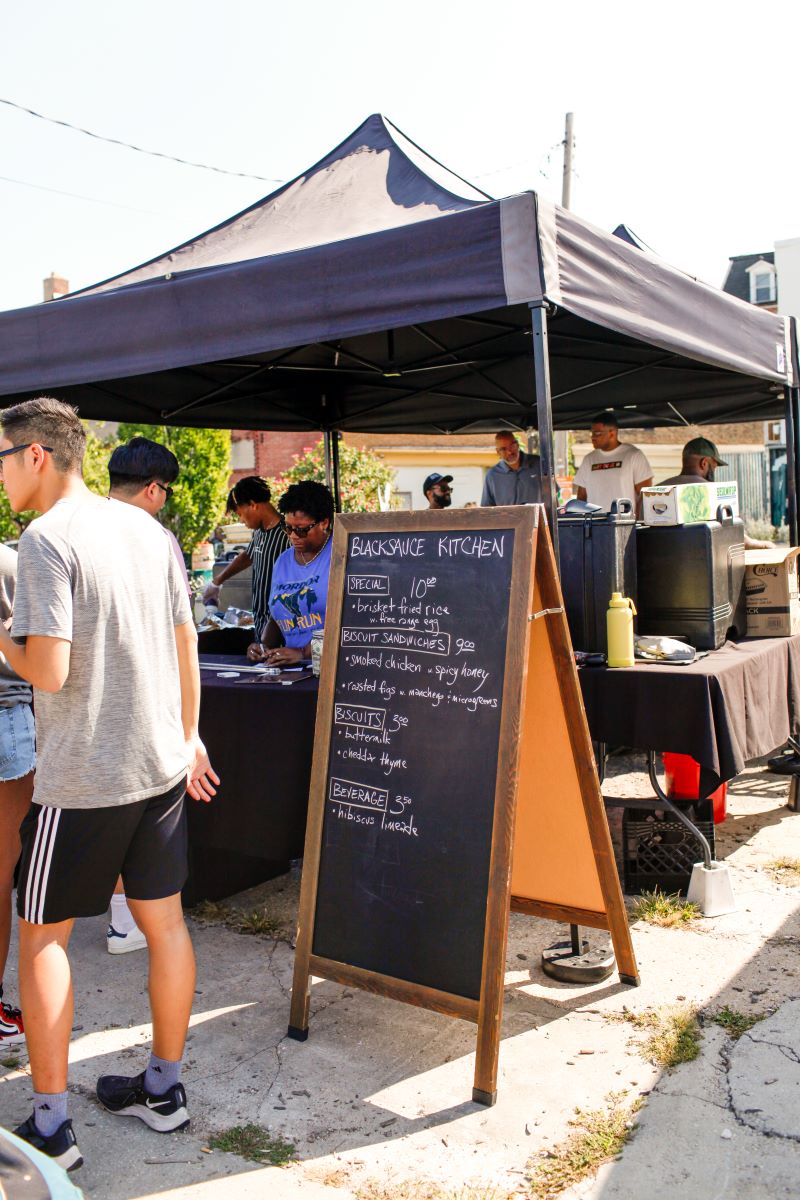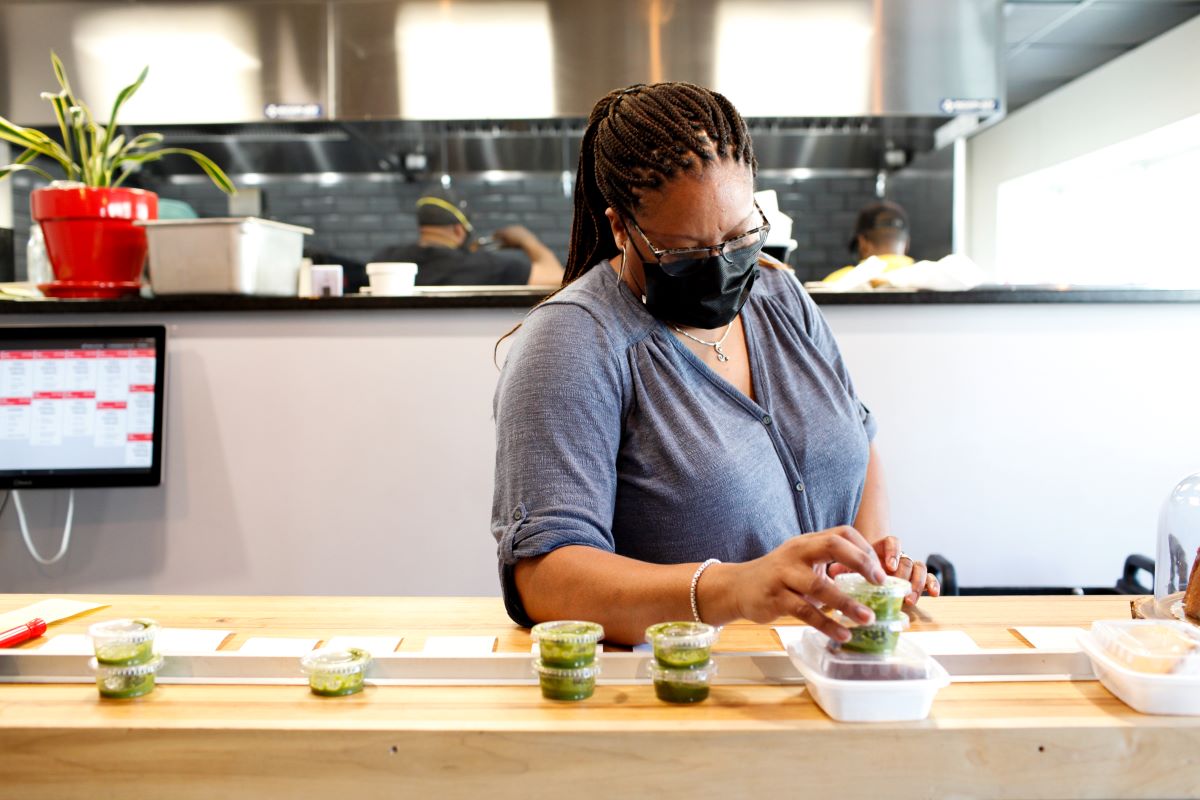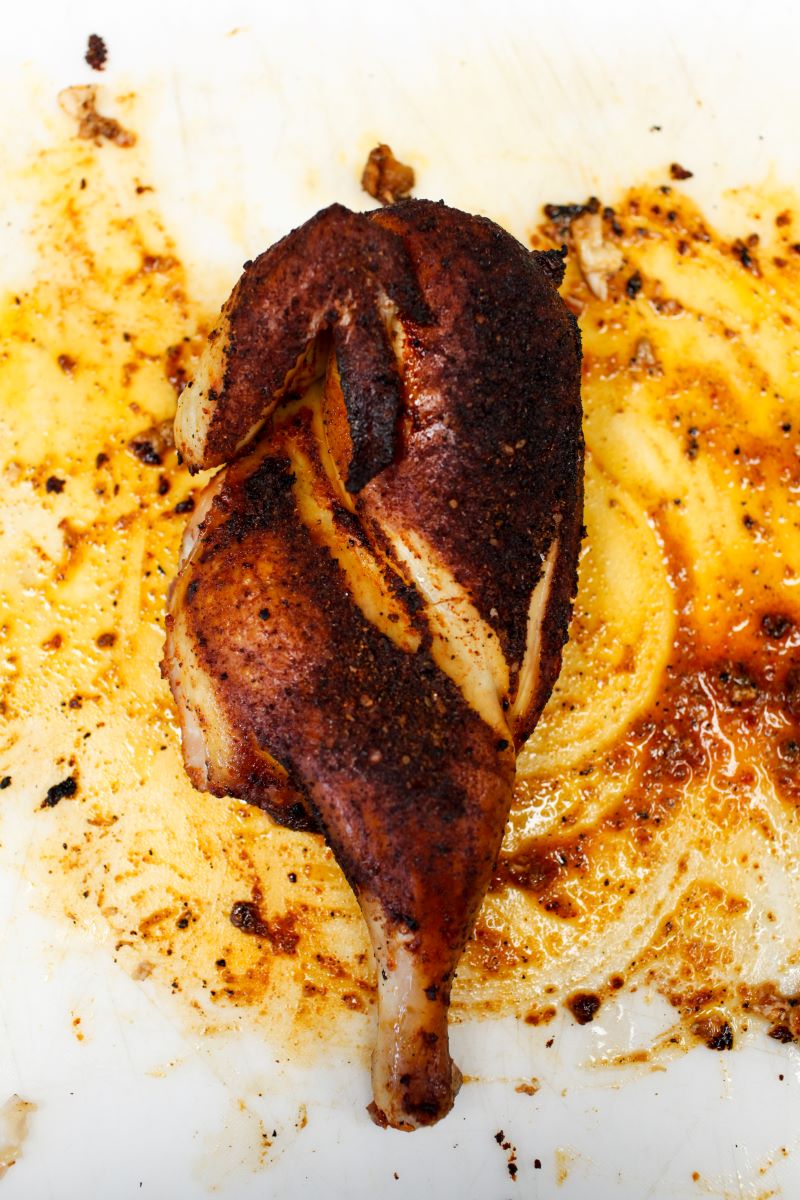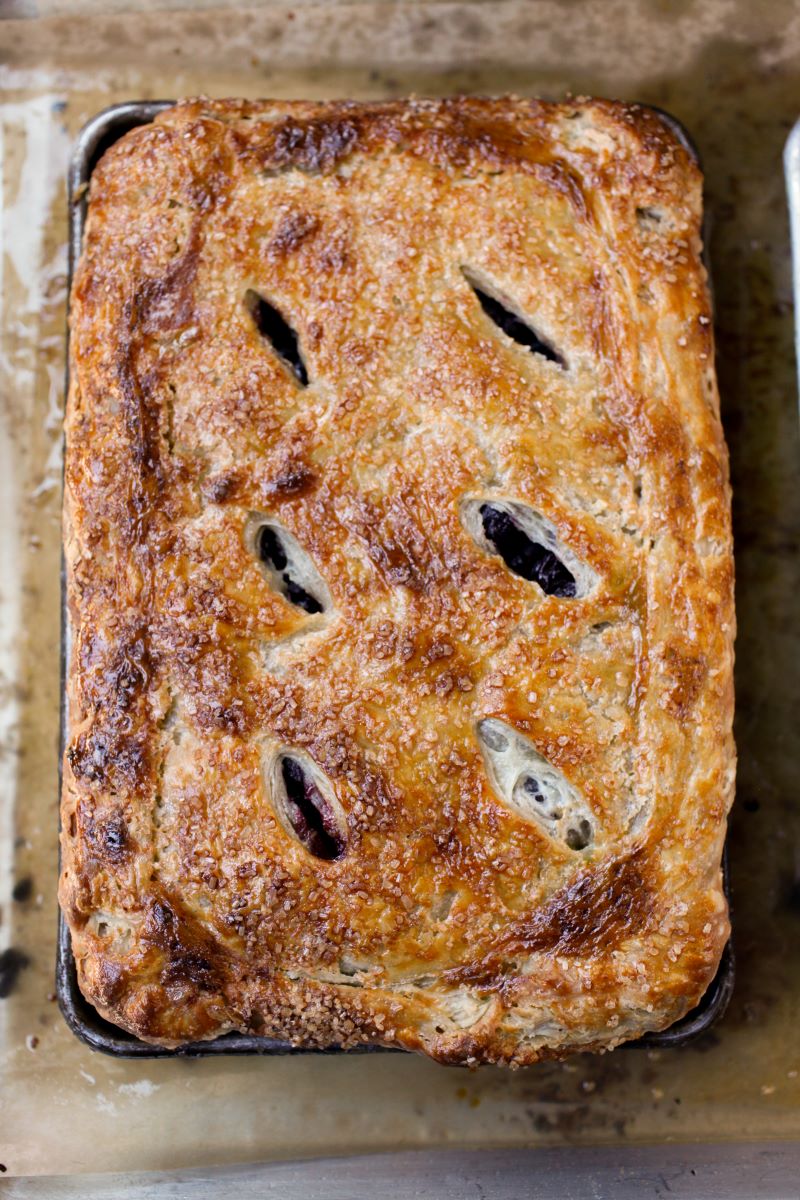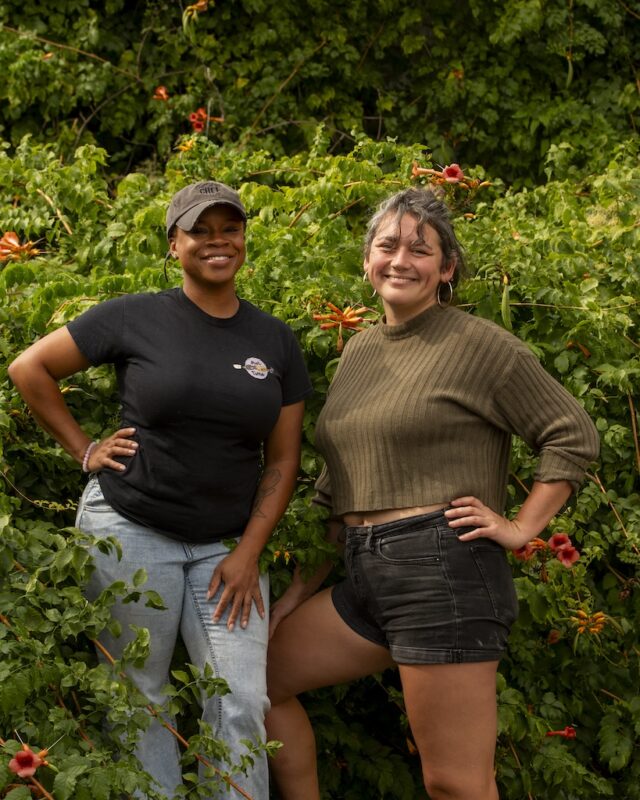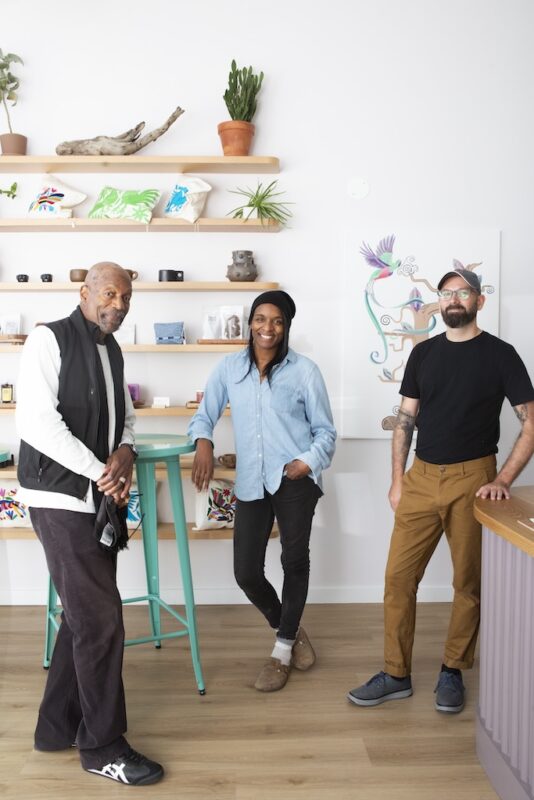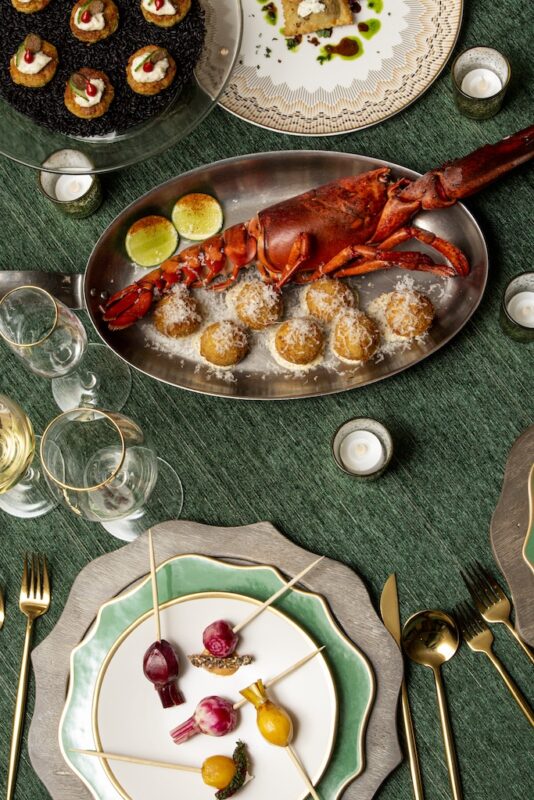I recall my visit to Blacksauce Kitchen’s booth in February. It was a chilly morning, but very sunny. When the sun dipped behind the clouds, the feel of winter came on full force, but none of those sensations mattered when I took the first bite of my breakfast sandwich. Perfectly seasoned and cooked jerk steak exploding with flavor—smoke, char, allspice, and garlic—an over-medium egg. The yolk burst and turned into velvet in the mouth. All squeezed between a legendary biscuit with a dense and buttery crumb. It was a memorable bite—the kind that pushes an audible moan from your throat. It’s almost embarrassing to eat something so good in a place so public.
“Good food has compensated a lot for us sometimes being late on a delivery or having last-minute menu changes,” Damian shares, interrupting my vivid memory. I nod and stumble back into our conversation. “Good food makes up for me having a bad day.” His face softens as if he’s recalling something specific. I don’t pry. Food service can be stressful and we’re only human. “We want to put out the best food possible in every scenario. People really remember good food.”
I agree emphatically.
The Blacksauce menus are an exegesis of 400 years of Black cuisine in the colonized West, with influences from West Africa, Jamaica, Trinidad and Tobago, and the Southern US. “If you grow up in the American South, you get tricked into thinking that there’s just one way to be Black, in terms of your consumption habits, your style, your speaking vernacular until you realize that there’s all these other whole worlds of Black people, Black culture, and Black cuisines.”
Damian shares that some of his most influential food experiences came from living with roommates from the Caribbean. “My college roommate was Jamaican and sometimes his mom would cook for us and it was different than the food my Mississippi-born parents were cooking,” he says.
While attending culinary school, he lived with a couple from Trinidad and Tobago where his interest in Caribbean food expanded. “In culinary school, the only techniques they’re gonna talk about are gonna be from France, Italy, and Spain, and—in terms of baking—maybe Austria,” he says. “Nobody’s really talking about what they do in the Caribbean. It doesn’t find its way into the curriculum.”
Despite its massive influence on the West, the Caribbean is often left out of academic discourse according to sociologist Mimi Sheller. In her book Consuming the Caribbean, she says, “Not only does each Caribbean society embody and encompass a rich mixture of genealogies, linguistic innovations, syncretistic religions, complex cuisine, and musical cultures, but these [islands] … have also exported their dynamic multi-cultures abroad, where they have recombined and generated new diasporic forms.”
“The Caribbean has really appealed to me for those reasons,” Damian says of its multicultural Black histories. During his time in culinary school, Damian left to work and cook in a hotel in Senegal. “That and living with a couple from Trinidad… really enriched my food experience while I was in culinary school getting these professional skills.”



